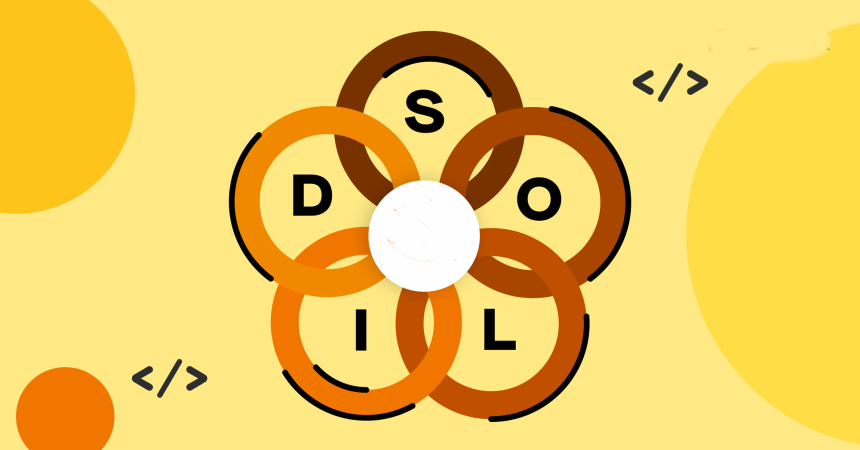
How to create custom annotations in Kotlin
Annotations in Kotlin can significantly enhance the readability, structure, and maintainability of your code
In the Kotlin programming language, annotations serve as a powerful mechanism to add metadata to code elements, such as classes, functions, parameters, and properties, without affecting their actual functionality. Originating from the Java ecosystem, Kotlin annotations inherit a similar syntax but are enhanced with Kotlin-specific features for a more streamlined and expressive usage. They are pivotal in providing instructions to the compiler, guiding code analysis tools, and facilitating runtime processing. Annotations can be used for a wide range of purposes, from marking code as deprecated, to influencing how data is serialized, or even modifying the behavior of frameworks and libraries. This introduction to Kotlin annotations lays the foundation for understanding how these metadata tags can be leveraged to write cleaner, more maintainable code, and sets the stage for exploring the creation of custom annotations to address specific needs within your Kotlin applications.
-------------
[1] Basics of Kotlin Annotations
Annotations in Kotlin are a form of metadata that provide data about the program but are not part of the program itself. Annotations have no direct effect on the operation of the code they annotate. Instead, they are used by the compiler and various tools during the build process, and can also be accessed at runtime through reflection. Kotlin annotations can be applied to classes, functions, properties, property accessors, parameters, and constructors.
Declaring an Annotation
In Kotlin, an annotation is declared using the annotation keyword followed by the class keyword. Here is a simple example of how to declare a custom annotation in Kotlin:
annotation class Special
Using Annotations
Once declared, this annotation can be used to annotate various program elements. For example:
@Special class MyClass { }
@Special fun myFunction() { }
Annotation Parameters
Kotlin annotations can also take parameters. These parameters are defined in the annotation's primary constructor. For instance:
annotation class Review(val reviewer: String, val date: String)
This Review annotation can then be applied as follows:
@Review(reviewer = "John Doe", date = "2022-01-01")
class Document { }
Built-in Annotations
Kotlin, like Java, comes with a set of built-in annotations. One commonly used annotation is @Deprecated, which marks a program element as deprecated. For example:
@Deprecated("This function will be removed in future releases.")
fun oldFunction() { }
Java Interoperability
Kotlin is fully interoperable with Java, and Kotlin annotations can be used in Java code as well. When a Kotlin annotation is applied to a declaration that is visible from Java, you need to specify the retention policy to make the annotation visible at runtime. For instance:
@Target(AnnotationTarget.CLASS, AnnotationTarget.FUNCTION, AnnotationTarget.VALUE_PARAMETER, AnnotationTarget.EXPRESSION) @Retention(AnnotationRetention.SOURCE) annotation class Fancy
In Java, this can be accessed (depending on the retention policy) like any Java annotation:
@Fancy
public class MyJavaClass { }
Summary
Annotations in Kotlin are a versatile feature borrowed from Java but enhanced to fit the Kotlin paradigm. They are used for a variety of purposes, including influencing the compiler's behavior, guiding the use of frameworks or libraries, and providing metadata for runtime reflection. Understanding how to declare and use annotations is a fundamental skill in Kotlin programming, opening the door to writing more expressive and powerful Kotlin code.
-----------
[2] Why Custom Annotations?
Exploring "Why Custom Annotations?" delves into the rationale behind creating and utilizing custom annotations in Kotlin, beyond the built-in annotations provided by the Kotlin and Java standard libraries. Custom annotations offer a way to express additional semantics, enforce constraints, or facilitate integration with frameworks and libraries in a declarative manner. Let's dive into the reasons for creating custom annotations and illustrate their utility with examples.
[A] Enhancing Code Readability and Maintainability
Custom annotations can significantly improve code readability by providing explicit markers for certain behaviors or characteristics. For instance, marking classes that need to be serialized or specifying special conditions under which a method should be executed.
annotation class JsonSerializable @JsonSerializable class User(val name: String, val age: Int)
Here, @JsonSerializable indicates that the User class should be serialized into JSON format, potentially by a custom serializer that scans for this annotation at runtime.
[B] Enforcing Coding Conventions and Safety
Custom annotations can be used to enforce specific coding conventions or safety checks, either at compile-time or runtime. This is particularly useful in large projects or teams to ensure consistency and prevent common errors.
annotation class ThreadSafe @ThreadSafe class SafeRepository
The @ThreadSafe annotation can be used to mark classes that are designed to be safe for use across multiple threads, serving as a reminder to maintain thread safety during future modifications.
[C] Integration with Frameworks and Libraries
Many frameworks and libraries leverage annotations to allow developers to configure behavior or integrate custom logic seamlessly. By creating custom annotations, developers can extend these frameworks in powerful and flexible ways.
annotation class ListenTo(val eventName: String)
class EventListener {
@ListenTo("userLoggedIn")
fun onUserLoggedIn(event: Event) { // Handle event }
}
In this example, the @ListenTo annotation is used to dynamically register event handlers based on the event name, simplifying event-driven programming.
[D] Simplifying Configuration
Custom annotations can also simplify configuration by replacing verbose configuration files or boilerplate code with concise and clear annotations.
annotation class ConfigProperty(val key: String)
class AppConfig {
@ConfigProperty(key = "app.timeout.seconds")
var timeout: Int = 30
}
Here, @ConfigProperty is used to bind class fields to configuration properties, making the configuration process more straightforward and type-safe.
Conclusion
Custom annotations in Kotlin provide a powerful mechanism for adding metadata to your code, influencing compiler behavior, enforcing coding standards, and facilitating integration with frameworks and libraries. By leveraging custom annotations, developers can write more expressive, maintainable, and configurable code, tailor-made to their specific project needs. The examples provided illustrate just a few of the many possibilities custom annotations unlock, encouraging a thoughtful approach to their use in Kotlin and Java projects.
---------
[3] Creating Your First Custom Annotation
Creating custom annotations in Kotlin is a straightforward process that can greatly enhance the expressiveness and functionality of your code. In this step-by-step guide, we'll walk through the process of defining a custom annotation, covering the basic syntax, and showing how to declare an annotation class and specify its targets. By the end of this guide, you'll have a clear understanding of how to create and use your first custom annotation in Kotlin.
Step 1: Declare the Annotation Class
The first step in creating a custom annotation is to declare the annotation class itself. This is done using the annotation keyword followed by the class keyword and the name of your annotation.
annotation class Loggable
Step 2: Specify Annotation Targets (Optional)
By default, a Kotlin annotation can be used on any declaration. However, you might want to restrict your annotation to certain types of declarations (e.g., functions, classes, properties). You can do this using the @Target meta-annotation.
@Target(AnnotationTarget.FUNCTION, AnnotationTarget.CLASS) annotation class Loggable
In this example, @Loggable can only be applied to functions and classes.
Step 3: Add Parameters to Your Annotation (Optional)
Annotations can have parameters to allow for more flexible and detailed configuration. Parameters are declared in the primary constructor of the annotation class.
annotation class Loggable(val level: String = "INFO")
Here, @Loggable includes an optional level parameter that specifies the logging level, with a default value of "INFO".
Step 4: Use the Annotation
Once your annotation is defined, you can use it to annotate classes, functions, or other elements, depending on the targets you've specified.
@Loggable(level = "DEBUG")
class UserService
@Loggable // Uses the default logging level "INFO"
fun update(user: User) {
// Function implementation
}
Step 5: Process the Annotation
While the declaration and application of annotations are straightforward, making your code actually respond to these annotations requires additional steps. This often involves using reflection (to read annotations at runtime) or annotation processing (to generate code at compile-time).
To check if a function is annotated with @Loggable and print a message accordingly, you might use reflection like this:
fun checkLoggable(function: KFunction<*>) {
function.findAnnotation<Loggable>()?.let {
println("Function ${function.name} is loggable with level ${it.level}.")
}
}
// Usage
checkLoggable(::updateUser)
Summary
Creating and using custom annotations in Kotlin involves a few simple steps: declaring the annotation class, optionally specifying targets and parameters, applying the annotation, and finally processing the annotation as needed. Although the above examples illustrate the basics, the real power of custom annotations comes through their ability to influence code behavior, either at compile-time through annotation processors or at runtime through reflection. This mechanism opens up a myriad of possibilities for making your code more declarative, readable, and maintainable.
----------
[4] Retention Policy and Target
The concepts of "Retention Policy" and "Target" are crucial in understanding how annotations work in Kotlin and Java, affecting both the visibility of annotations and the context in which they can be applied. Let’s dive into each aspect with detailed explanations and sample code.
[A] Retention Policy
The retention policy of an annotation determines at which point the annotation is discarded during the compilation and execution of your program. Both Kotlin and Java support three types of retention policies:
- Source: The annotation is only available in the source code and is discarded by the compiler.
- Binary: The annotation is retained in the compiled class files but not available at runtime.
- Runtime: The annotation is available at runtime through reflection.
In Kotlin, you specify the retention policy using the @Retention annotation:
@Retention(AnnotationRetention.SOURCE) annotation class DebugLog
This @DebugLog annotation is only available in the source code, making it useful for annotations that are intended to be processed by tools that analyze the source code.
[B] Target
The target of an annotation specifies the kinds of program elements to which the annotation can be applied (e.g., classes, methods, fields, parameters).
In Kotlin, the @Target annotation is used to specify the allowable targets:
@Target(AnnotationTarget.CLASS, AnnotationTarget.FUNCTION) annotation class Todo
This @Todo annotation can only be applied to classes and functions.
[C] Combining Retention and Target
Annotations often combine both a retention policy and a set of targets to precisely control their applicability and visibility.
Kotlin Combined Example
@Retention(AnnotationRetention.BINARY) @Target(AnnotationTarget.CLASS, AnnotationTarget.FUNCTION) annotation class WorkInProgress
This Kotlin annotation is kept in the binary output and can be applied to both classes and functions.
Conclusion
Understanding the retention policy and target of annotations is essential for their effective use in Kotlin and Java programming. These features allow developers to define how and where annotations should be used, influencing tooling, compile-time processing, and runtime behavior. By carefully choosing the appropriate retention policy and target, you can create annotations that are precisely tailored to your application’s needs, enhancing code readability, maintainability, and functionality.
---------
[5] Processing Annotations in Kotlin
Processing annotations in Kotlin involves recognizing and acting upon annotation information, either at compile-time or runtime. This processing is essential for leveraging annotations to influence program behavior, generate code, or perform reflective operations. Kotlin provides mechanisms for annotation processing through reflection at runtime and compile-time annotation processing tools like kapt (Kotlin Annotation Processing Tool) and ksp (Kotlin Symbol Processing). Let's explore how annotations can be processed in Kotlin with detailed explanations and examples.
[A] Runtime Annotation Processing with Reflection
Kotlin's reflection API enables examining and manipulating classes, functions, properties, and their annotations at runtime. To use Kotlin reflection, you need to include the Kotlin reflection library (kotlin-reflect.jar) in your project.
Example: Accessing Annotation Information at Runtime
Consider an annotation @HttpEndpoint that specifies an HTTP method and a path:
@Target(AnnotationTarget.FUNCTION) @Retention(AnnotationRetention.RUNTIME) annotation class HttpEndpoint(val method: String, val path: String)
You can use Kotlin reflection to inspect this annotation on a function:
class ApiController {
@HttpEndpoint(method = "GET", path = "/users")
fun getUsers() {}
}
fun processHttpEndpoints(controller: Any) {
val kClass = controller::class
for (function in kClass.members) {
function.findAnnotation<HttpEndpoint>()?.let { endpoint ->
println("Found endpoint: ${endpoint.method} ${endpoint.path} on ${function.name}")
}
}
}
// Usage
processHttpEndpoints(ApiController())
This example demonstrates how to iterate over a class's members, find functions annotated with @HttpEndpoint, and access the annotation's properties.
[B] Compile-time Annotation Processing with kapt
Compile-time annotation processing in Kotlin is achieved using kapt, which allows generating additional source files during compilation based on annotations. This is particularly useful for code generation tasks, such as creating boilerplate code or DSLs.
Setting Up kapt
First, ensure that the kapt plugin is applied in your build.gradle file:
apply plugin: 'kotlin-kapt'
Let's say you want to generate a report of classes annotated with @Reportable:
@Target(AnnotationTarget.CLASS) @Retention(AnnotationRetention.SOURCE) annotation class Reportable
You would create an annotation processor in Java (as kapt works with Java's annotation processing API):
This processor looks for elements annotated with @Reportable and logs their names. To make the processor discoverable, you would use the @AutoService annotation from the Google AutoService library, which generates the necessary service provider configuration files automatically.
import javax.annotation.processing.AbstractProcessor;
import javax.annotation.processing.RoundEnvironment;
import javax.annotation.processing.Processor;
import javax.lang.model.element.TypeElement;
import javax.tools.Diagnostic;
import com.google.auto.service.AutoService;
@AutoService(Processor.class)
public class ReportableProcessor extends AbstractProcessor {
@Override
public Set<String> getSupportedAnnotationTypes() {
return Set.of("com.example.Reportable");
}
@Override
public boolean process(Set<? extends TypeElement> annotations, RoundEnvironment roundEnv) {
for (TypeElement annotation : annotations) {
roundEnv.getElementsAnnotatedWith(annotation).forEach(element -> {
String message = "Found @Reportable class: " + element.getSimpleName();
processingEnv.getMessager().printMessage(Diagnostic.Kind.NOTE, message);
});
}
return true;
}
}
Conclusion
Processing annotations in Kotlin, whether at runtime using reflection or at compile-time using kapt, opens up a wide range of possibilities for enhancing your Kotlin applications. Runtime reflection is powerful for dynamic operations based on annotation metadata, while kapt excels in code generation and compile-time validation tasks. By understanding and utilizing these tools, you can create more expressive, efficient, and maintainable Kotlin code.
[C] Compile-time Annotation Processing with ksp
Kotlin Symbol Processing (KSP) is an alternative to kapt (Kotlin Annotation Processing Tool) for processing annotations in Kotlin. Developed by Google, KSP offers a powerful and efficient way to generate code, analyze Kotlin code, and work with annotations during the compilation process. It's designed to be faster and more efficient than kapt, providing direct access to Kotlin compiler symbols and their associated information. Let's explore how to use KSP to process annotations in Kotlin, including setup and a simple example.
Setting Up KSP
To start using KSP in your Kotlin project, you need to add the KSP plugin and dependencies to your project's build script.
Add the KSP plugin to your build.gradle.kts (Kotlin script) or build.gradle (Groovy script) file:
For build.gradle.kts (Kotlin DSL):
plugins {
kotlin("jvm") version "1.5.20" // Use the appropriate Kotlin version
id("com.google.devtools.ksp") version "1.5.20-1.0.0-beta01" // Use the appropriate KSP version
}
dependencies {
implementation("com.google.devtools.ksp:symbol-processing-api:1.5.20-1.0.0-beta01")
}
ksp {
arg("optionKey", "optionValue")
}
For build.gradle (Groovy DSL):
plugins {
id 'org.jetbrains.kotlin.jvm' version '1.5.20'
id 'com.google.devtools.ksp' version '1.5.20-1.0.0-beta01'
}
dependencies {
implementation 'com.google.devtools.ksp:symbol-processing-api:1.5.20-1.0.0-beta01'
}
ksp {
arg('optionKey', 'optionValue')
}
Sync your project with Gradle files to apply the changes.
Creating a Simple Annotation Processor with KSP
Let's create a simple annotation processor using KSP that generates a function that prints a message for classes annotated with a custom annotation.
1) Define a custom annotation:
// File: src/main/kotlin/annotations/Loggable.kt package annotations @Target(AnnotationTarget.CLASS) @Retention(AnnotationRetention.SOURCE) annotation class Loggable
2) Implement the KSP processor:
Create a class that extends SymbolProcessor and override the process method to handle the annotation.
// File: src/main/kotlin/processors/LoggableProcessor.kt
package processors
import com.google.devtools.ksp.processing.*
import com.google.devtools.ksp.symbol.KSAnnotated
import com.google.devtools.ksp.symbol.KSClassDeclaration
import com.google.devtools.ksp.visitor.KSDefaultVisitor
class LoggableProcessor(private val codeGenerator: CodeGenerator) : SymbolProcessor {
override fun process(resolver: Resolver): List<KSAnnotated> {
resolver.getSymbolsWithAnnotation("annotations.Loggable")
.filterIsInstance<KSClassDeclaration>()
.forEach { classDeclaration ->
generateLogFunction(classDeclaration)
}
return emptyList()
}
private fun generateLogFunction(classDeclaration: KSClassDeclaration) {
val packageName = classDeclaration.packageName.asString()
val className = "${classDeclaration.simpleName.asString()}Generated"
val file = codeGenerator.createNewFile(
Dependencies(true, classDeclaration.containingFile!!),
packageName,
className
)
file.writer().use { writer ->
writer.write("""
package $packageName
fun $className() {
println("Logging from $className generated function")
}
""".trimIndent())
}
}
}
3) Register the processor with KSP:
Create a file named resources/META-INF/services/com.google.devtools.ksp.processing.SymbolProcessorProvider and include the fully qualified name of a class that implements SymbolProcessorProvider.
processors.LoggableProcessorProvider
Implement the SymbolProcessorProvider:
// File: src/main/kotlin/processors/LoggableProcessorProvider.kt
package processors
import com.google.devtools.ksp.processing.SymbolProcessor
import com.google.devtools.ksp.processing.SymbolProcessorEnvironment
import com.google.devtools.ksp.processing.SymbolProcessorProvider
class LoggableProcessorProvider : SymbolProcessorProvider {
override fun create(environment: SymbolProcessorEnvironment): SymbolProcessor {
return LoggableProcessor(environment.codeGenerator)
}
}
Annotate a class with @Loggable:
// File: src/main/kotlin/sample/SampleClass.kt package sample import annotations.Loggable @Loggable class SampleClass
Build your project: When you build your project, KSP processes the @Loggable annotation and generates a file containing the SampleClassGenerated function.
Conclusion
KSP provides a powerful and efficient mechanism for processing annotations in Kotlin, facilitating code generation and other compile-time transformations. By directly interfacing with the Kotlin compiler's internal representation of symbols, KSP allows for more sophisticated and performant processing compared to traditional annotation processing techniques. This example demonstrates the basics of setting up KSP, creating a simple annotation processor, and generating code based on annotations, opening the door to a wide range of possibilities for compile-time code manipulation and generation in Kotlin projects.
---------
[6] Advanced Usage of Custom Annotations
Custom annotations in Kotlin and Java can be leveraged for advanced use cases far beyond simple metadata marking. They are particularly powerful in developing frameworks, facilitating code generation, and enhancing testing strategies by providing a declarative and type-safe way to add behavior, configurations, and metadata. Let's explore some advanced scenarios where custom annotations demonstrate their full potential.
[A] Developing Frameworks with Annotations
Annotations are instrumental in framework development, allowing developers to mark classes, methods, or fields for special processing.
Kotlin Example: Dependency Injection Framework
Consider creating a minimal dependency injection framework where components are automatically instantiated and injected.
@Target(AnnotationTarget.CLASS)
@Retention(AnnotationRetention.RUNTIME)
annotation class Injectable
@Target(AnnotationTarget.FIELD)
@Retention(AnnotationRetention.RUNTIME)
annotation class Inject
@Injectable
class UserRepository
class UserService {
@Inject
lateinit var userRepository: UserRepository
}
fun initializeService(service: Any) {
service::class.members.forEach { member ->
if [member.findAnnotation<Inject>() != null && member is KMutableProperty<*>) {
val type = member.returnType.classifier as KClass<*>
val instance = type.createInstance() // Simplified instantiation
member.setter.call(service, instance)
}
}
}
This example demonstrates a simplistic approach to dependency injection, where @Inject annotated fields are automatically populated with instances of @Injectable annotated classes.
[B] Code Generation with Annotation Processors
Annotations can trigger code generation, reducing boilerplate and ensuring compile-time safety.
Java Example: Generating Builder Classes
Using an annotation processor to generate builder classes for annotated data classes can streamline object creation.
// The annotation
@Target(ElementType.TYPE)
@Retention(RetentionPolicy.SOURCE)
public @interface GenerateBuilder {}
// Annotated class
@GenerateBuilder
public class Person {
private final String name;
private final int age;
// Constructor, getters...
}
// Annotation processor (simplified)
@SupportedAnnotationTypes("GenerateBuilder")
@SupportedSourceVersion(SourceVersion.RELEASE_8)
public class BuilderGeneratorProcessor extends AbstractProcessor {
@Override
public boolean process(Set<? extends TypeElement> annotations, RoundEnvironment roundEnv) {
// Processing logic to generate Builder classes
}
}
This processor would generate a PersonBuilder class with a fluent API, automating the otherwise manual process.
[C] Enhancing Testing Strategies
Custom annotations can also be used to define and manage testing configurations, data sets, or even specific testing behaviors.
Kotlin Example: Custom Test Conditions
A custom annotation can be used to specify conditions under which a test should be executed, enabling more dynamic and configurable test suites.
@Target(AnnotationTarget.FUNCTION)
@Retention(AnnotationRetention.RUNTIME)
annotation class TestIf(val condition: KClass<out Condition>)
interface Condition {
fun evaluate(): Boolean
}
class EnvironmentCondition : Condition {
override fun evaluate(): Boolean = System.gettenv("TEST_ENV") == "CI"
}
class TestRunner {
fun runTests(testClass: Any) {
testClass::class.members.filterIsInstance<KFunction<*>>().forEach { function ->
function.findAnnotation<TestIf>()?.let { annotation ->
if [annotation.condition.objectInstance?.evaluate() == true) {
function.call(testClass)
}
}
}
}
}
class MyTests {
@TestIf(condition = EnvironmentCondition::class)
fun testOnlyOnCI() {
// Test code
}
}
This setup enables running testOnlyOnCI only when the EnvironmentCondition evaluates to true, demonstrating how custom annotations can tailor testing strategies to specific requirements or environments.
Conclusion
Advanced usage of custom annotations across Kotlin and Java can significantly enhance the design and functionality of applications, frameworks, and testing strategies. By defining custom behavior, automating code generation, and introducing conditional processing based on annotations, developers can create more maintainable, readable, and efficient codebases. These examples barely scratch the surface, encouraging exploration and innovation in utilizing annotations in complex scenarios.


![Design Patterns - [1] Creational](https://abuzaid.me/uploads/1675322863.jpeg)


